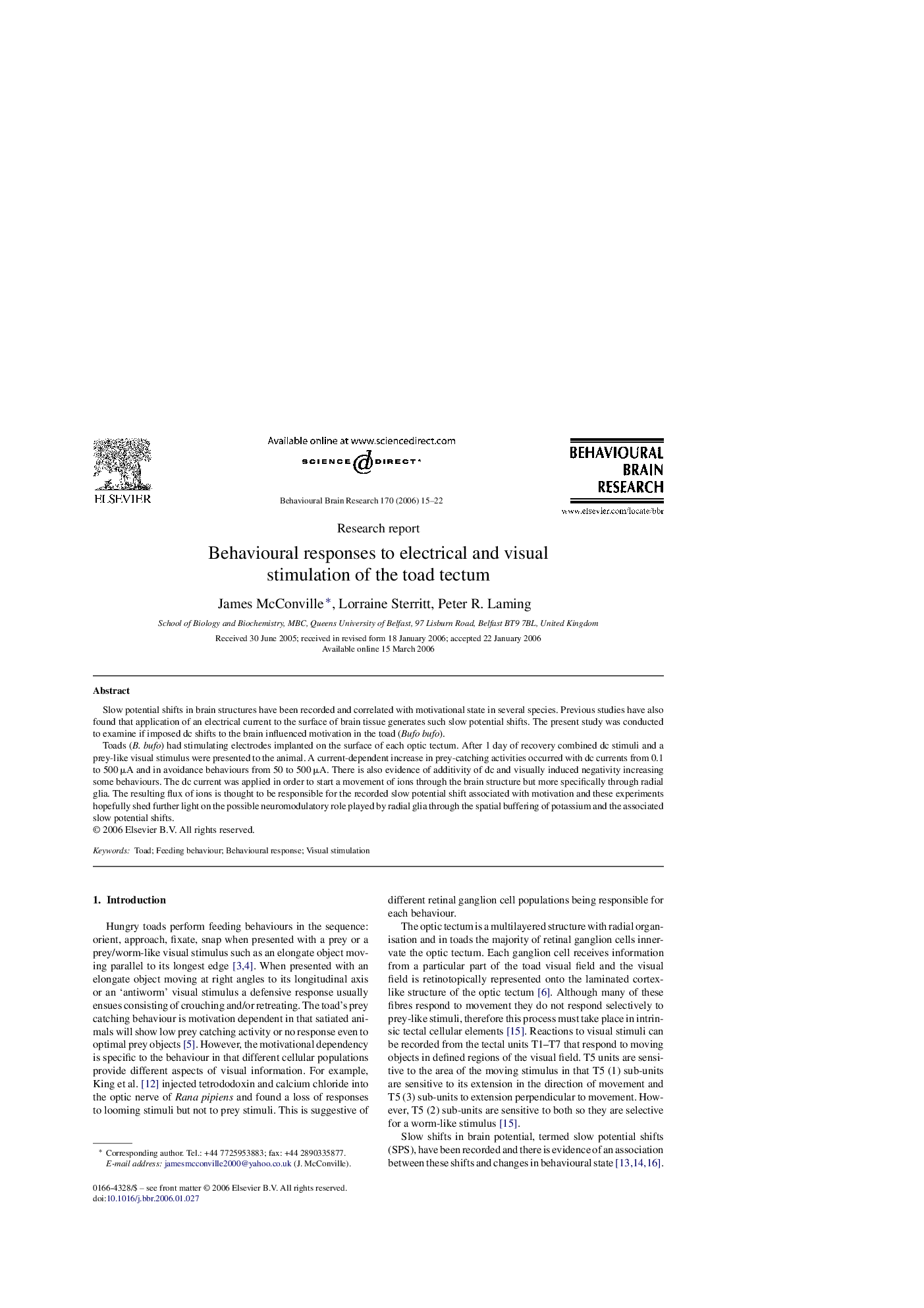| Article ID | Journal | Published Year | Pages | File Type |
|---|---|---|---|---|
| 4316087 | Behavioural Brain Research | 2006 | 8 Pages |
Abstract
Toads (B. bufo) had stimulating electrodes implanted on the surface of each optic tectum. After 1 day of recovery combined dc stimuli and a prey-like visual stimulus were presented to the animal. A current-dependent increase in prey-catching activities occurred with dc currents from 0.1 to 500 μA and in avoidance behaviours from 50 to 500 μA. There is also evidence of additivity of dc and visually induced negativity increasing some behaviours. The dc current was applied in order to start a movement of ions through the brain structure but more specifically through radial glia. The resulting flux of ions is thought to be responsible for the recorded slow potential shift associated with motivation and these experiments hopefully shed further light on the possible neuromodulatory role played by radial glia through the spatial buffering of potassium and the associated slow potential shifts.
Related Topics
Life Sciences
Neuroscience
Behavioral Neuroscience
Authors
James McConville, Lorraine Sterritt, Peter R. Laming,
